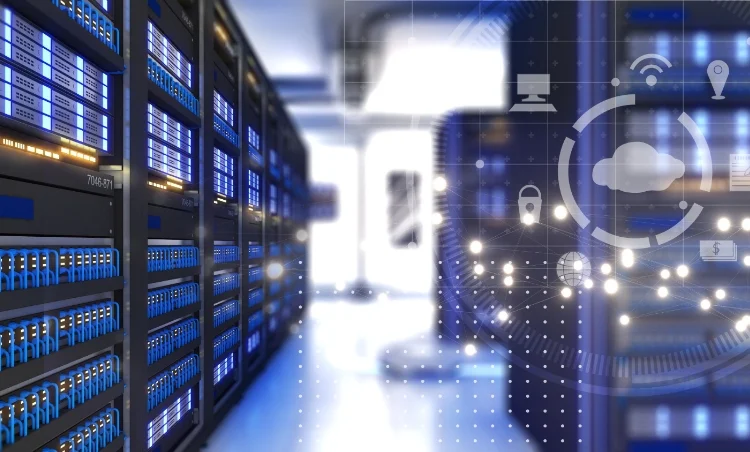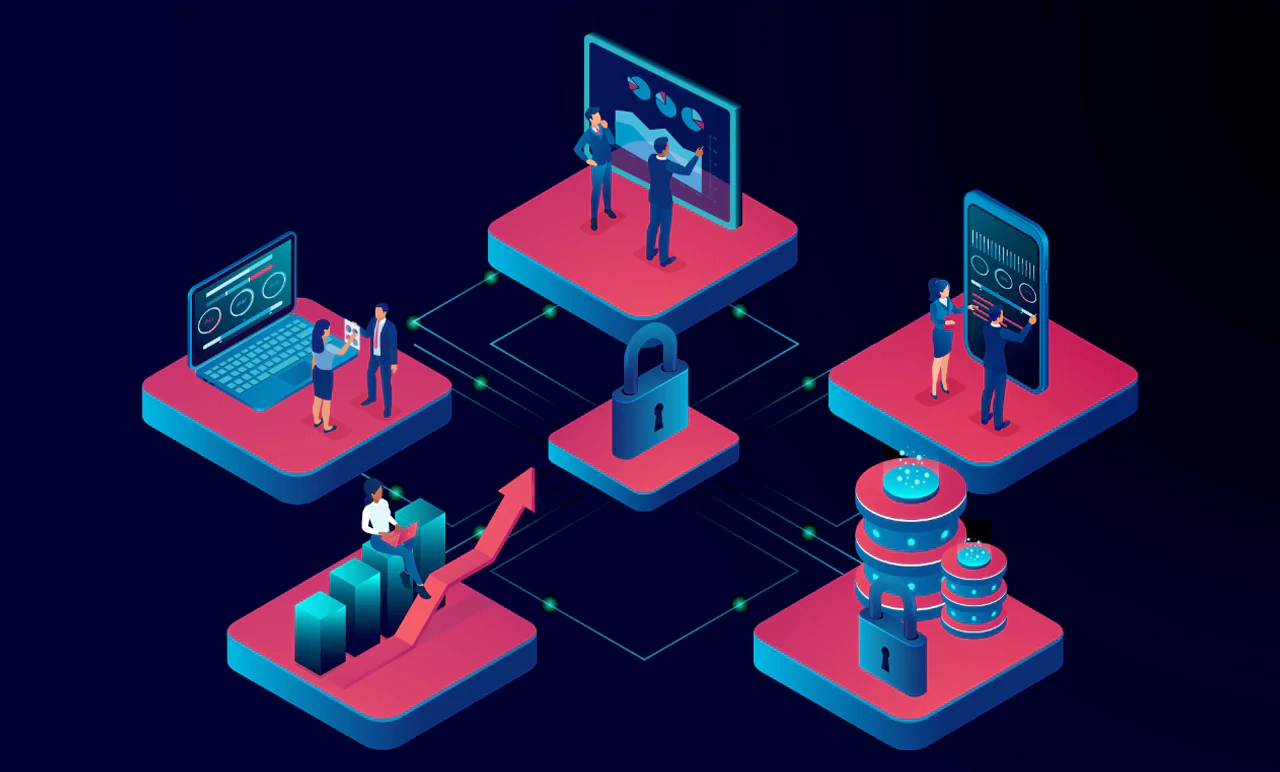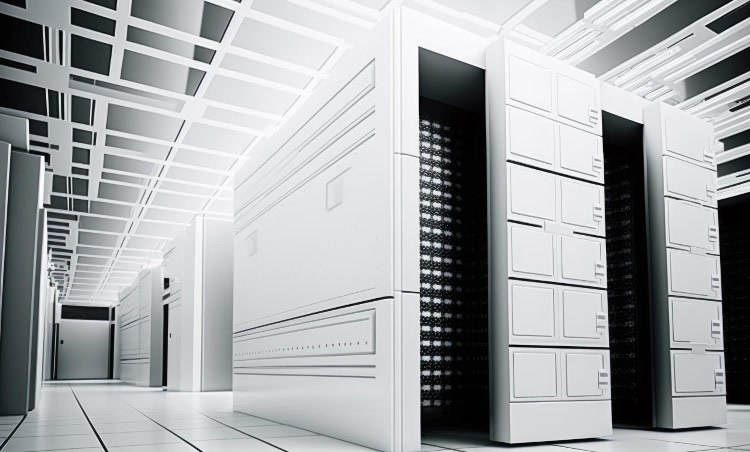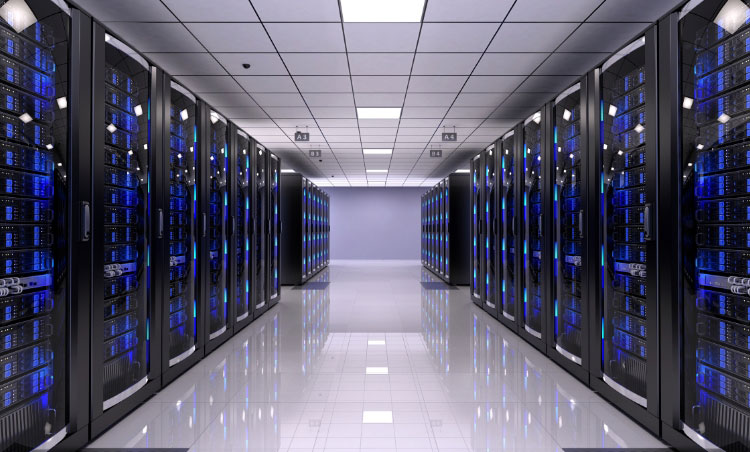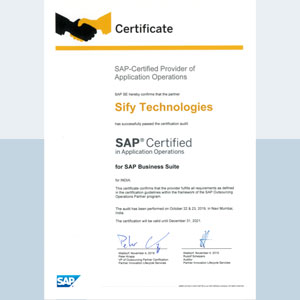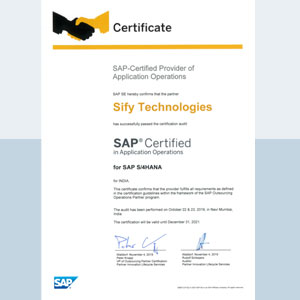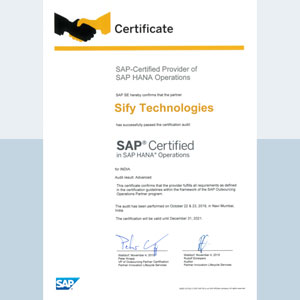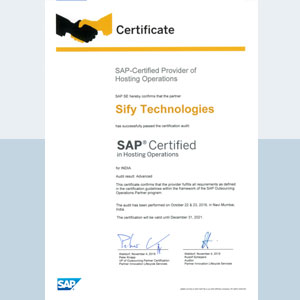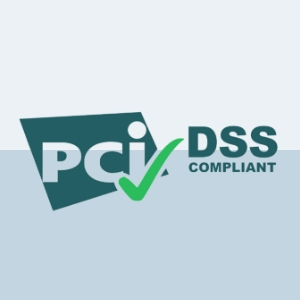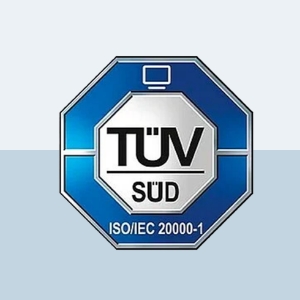The future of enterprise networking: Exploring the benefits of SD-WAN
The conversation around networking solutions has reached a critical juncture, and software-defined wide area networks (SD-WAN) have become central to this discourse. The SD-WAN market is projected to reach USD 13.7 billion by 2027, growing at a compounded rate of 31.9% annually. As enterprises demand agile, built-for-purpose, future-ready, cost-effective, and secure networking solutions, SD-WAN represents a preferable alternative to the limitations of traditional networking solutions. This article delves into the transformative business benefits of SD-WAN, its advantages over traditional WAN technologies, and why enterprises must take immediate notice.
What is SD-WAN and how has it evolved?
Consider this scenario: A retail chain with stores in multiple cities, each running different promotions, handling distinct inventory, and serving diverse customer needs. How do they ensure that all of their branches communicate efficiently with the headquarters and with each other? How do they safeguard sensitive data that is exchanged over their network?
SD-WAN emerges as a game-changing solution in these contexts. It leverages software-defined networking (SDN) to establish a more agile and responsive network ecosystem. It dynamically optimizes WAN performance, delivering an exceptional user experience.
Traditional WAN vs. SD-WAN
Traditional WAN architectures offer robust stability, compatibility with legacy systems, and regulatory compliance. Through high-quality connections like MPLS, they guarantee performance where it is critical. Being a widely adopted technology, many organizations have the in-house expertise to manage them efficiently. On the other hand, they are known for their rigidity and inefficiency, often requiring a lot of manual configurations. The lack of centralized management is also a major drawback. All of this results in higher costs, poor performance and lack of scalability.
SD-WAN revolutionizes this space by offering significant WAN optimization. SD-WAN shines in its ability to offer agile, cost-effective, and scalable networking solutions with centralized management. Leveraging software-defined networking, it optimizes traffic routes, prioritizing essential applications for enhanced performance and reliability. Additionally, built-in security features, such as end-to-end encryption, fortify the network, making it an alternative to traditional WAN technologies.
Organizations adopting SD-WAN can expect to reduce networking costs while significantly improving their bandwidth. Its fast, reliable, and secure network can handle any unprecedented surge in users. Centralized management and better visibility keep diverse locations connected efficiently.
Sify’s Managed SD-WAN: Features and benefits
Sify, a recognized niche player in the Gartner Global Managed Services Magic Quadrant, offers a cutting-edge managed SD-WAN platform, developed in collaboration with top OEMs. Sify SD-WAN helps enterprises to meet the evolving network requirements with unmatched agility, security, and scale.
- Improved performance:
Superior application steering, intelligent routing and application prioritization result in accelerated performance, reduced latency, and enhanced user experience.
- Cost savings:
SD-WAN brings down hardware costs and optimizes bandwidth and network assets utilization, helping to derive the best long-term ROI.
- Simplified management:
Centralized control, policy management and automation simplify network management, reducing manual configurations and enabling efficient scaling. Management dashboards offer granular views based on business intent.
- Enhanced security:
SD-WAN security benefits include bolstered overall network security, encrypted traffic and secure connections for remote offices.
- Application awareness:
SD-WAN excels in application-aware dynamic bandwidth allocation, particularly useful in high-demand scenarios. Pre-configured SD-WAN policies can immediately identify and prioritize latency-sensitive traffic to ensure there is no degradation in quality.
- Automatic failover:
SD-WAN’s intelligent algorithms detect congestion or failure on the primary connection, and they automatically switch traffic to a secondary connection, ensuring uninterrupted user experience.
For more insights into a best-practices-driven SD-WAN implementation, click here to learn how Sify’s SD-WAN services combine robust performance with cost-effectiveness.
Emerging trends: The future of SD-WAN
SD-WAN as-a-Service: Managed SD-WAN deployments are growing rapidly, with more enterprises choosing to outsource WAN management to specialized service providers. By 2020, this number had risen to nearly 50%, from just 8% of deployments in 2017. There has been a noticeable shift towards offering SD-WAN as-a-service, with businesses able to adopt this technology without hefty upfront investments.
SD-WAN and Secure Access Service Edge (SASE): When integrated into a SASE framework, SD-WAN benefits from an additional layer of security, which makes policy-based, secure access to network resources efficient and highly secure. For example, SD-WAN enhances secure remote access by providing encrypted pathways between remote locations and central networks. To add to this point, the focus on zero-trust security models further boosts SD-WAN’s credentials as a secure networking solution, by ensuring that all traffic is verified before access to the network is granted.
SD-WAN and Cloud: Traditional WAN architectures often struggle to efficiently route cloud-bound traffic, leading to suboptimal performance and potential security risks. SD-WAN dynamically routes traffic based on application type, quality of service requirements, and network conditions. It can identify the most efficient path to a particular cloud service and optimize the route for performance, reliability, and security. Furthermore, SD-WAN solutions often have native integrations with major cloud service providers. Such “cloud on-ramp” capabilities empower SD-WAN for rapid and secure cloud access.
SD-WAN and AI: AI-driven automation is enhancing SD-WAN by enabling smarter traffic management and improved security through anomaly detection. By integrating AI and machine learning, SD-WAN becomes capable of intelligent network optimization and predictive analytics. A unified approach (often enabled by a single management console) consolidates heterogeneous networks and traffic onto a single platform for easier management and also serves as a rich source of network and security data.
SD-WAN and the Edge: SD-WAN enables near-real-time data processing and analysis at the source, reducing latency and boosting application performance. Its dynamic traffic routing capabilities also enhance efficient data handling at distributed edge locations, allowing organizations to deliver timely insights and actions.
Conclusion: Key considerations for implementing SD-WAN
SD-WAN will play a pivotal role in the next wave of digital transformation. Organizations that are considering the switch should begin by assessing their needs and choose an SD-WAN solution or a service provider who can offer the full suite of capabilities suited to these needs.
Sify delivers a managed SD-WAN platform that enables the network agility and security needed by the modern-day enterprise. Sify’s SD-WAN platform supports customers’ network needs across a multi-service provider and multi-media environment. Learn how you can empower your network with our SD-WAN services. Learn more
Exploring India’s Potential as a Preferred Hyperscale Data Center Destination
The Indian data center market has witnessed phenomenal growth in recent years, driven by the increasing adoption of digitalization, internet penetration, e-commerce and cloud computing. Due to accelerated adoption of public cloud and data sovereignty policies, major global players are investing heavily in hyper-scale facilities, turning the nation into a hyperscale data center hub to meet the increasing demand of cloud services.
According to a report, the data center industry in India to cross 1.3 GW capacity and grow 2.4x by 2024. The hyperscale market is expected to grow 20% from 2021 to 2026, with over 300 new hyperscale sites in development globally today, that number is expected to surpass 1,000 by end of 2024.
Hyperscale Data Center Colocation Providers in India are Revolutionizing Data Center Infrastructure:
Having a data center in India has its own benefits. Several prominent data center providers have already made significant investments in data centers that offer massive colocaation facilities, capable of housing high-performing servers and storage systems, providing immense computing power, storage capacity, and scalability. These data centers cater to all the needs of Public Cloud providers, global Enterprises, and OTT players, who require massive infrastructure to support their digital services and handle the exponential growth of data.
Let’s explore the reasons why India is an attractive destination for hyperscale Data Centers
- Vast market size and growing digital economy
The proliferation of data generation at edge, vast market size with favorable business environment, and India’s rapidly expanding digital economy, fuelled by the government’s Digital India initiative is making India- one of the main data centers destinations in the world. Policies aimed at data localization and data sovereignty has incentivized both domestic and international CSPs to establish hyperscale data centers in India to comply with these regulations.
- Increased adoption of cloud services in India
The increase in cloud services adoption in India reflects a broader trend of digitalization and technology-driven innovation. As organizations continue to realize the benefits of cloud computing, India is poised to play a pivotal role in the global cloud services landscape.
Cloud-born startups and automation-dependent businesses are defining the growth and scale of data center services. For instance, hybrid cloud adoption is enabling digital enterprises to leverage private infrastructure for compliance, sensitive workloads, greater control on the applications and environment, and tap into the high computing power of public clouds for bursting or scaling requirements, enabling digital innovation, and easier access to next-gen technologies like AI/ML, thus accommodating evolving business needs.
- Scalable data center campuses with growth options for up to 10 years
Scalability is one of the top challenges that hyperscalers and enterprises face as the demands on their technology systems increases. To help customers data processing seamlessly, hyperscale companies need exceptional storage, capacity, and flexibility to match their internal data processing requirements.
Hyperscale-ready data centers facilities in India are designed to become agile to cater the growing demand and meet any load they service. By setting up new availability zones set up and built-to-suit capabilities, most data center providers offer growth options for up to 10 years, enabling faster time to market in a cost-effective manner.
Sify’s data center in Rabale, Mumbai is an expandable mega data center campus designed for 10 towers, with 5 of them fully operational. The large campus has a 200 MW IT power capacity with up to 15,000+ racks. The remaining towers are in development and planning phase to favor hyperscale and retail clients’ dynamic workloads.
- Dense interconnect networks
The availability of dense interconnect networks has played a significant role in contributing to the growth of data centers in India. Hyperscale data center providers help businesses seamlessly connect to public clouds through high speed, low latency network while ensuring enhanced quality of services (QoS), secured information exchange, and guaranteed performance.
- Ample Stable power
The rapid growth of data center usage results in a growth of energy needs of the facility. Hyperscalers look for locations with access to stable and redundant power infrastructure, including multiple power grids, reliable electrical connections, and backup generators. India hosts several locations across its geographical reach that offers ample power and the capacity to scale up as hyperscalers’ operations expand. Data center providers assess the availability of power grids, transmission lines, and substations in the vicinity to attract and meet hyperscalers core requirements.
- Abundant Renewable Energy Potential
India offers substantial renewable energy potential, including solar and wind power. The country’s focus on renewable energy development aligns with the sustainability goals of hyperscale data center operators which is to make themselves carbon-neutral, making India an attractive choice for establishing environmentally friendly data centers. Most data center service providers in India are investing in green practices to meet the sustainability guidelines.
Sify data centers are green and energy-efficient data centers with 200+ MW of renewable power contracted. Additional nation-wide Green power for upcoming Data Center facilities is underway. With a reduction in carbon footprint by 28% during 2021-22, Sify ensures implementation of innovative practices to achieve low PUE (ASHRAE guidelines) and low WUE (Green Grid guidelines). It is a significant commitment to dedicated solar and wind renewable investment.
- Skilled Workforce and Technological Expertise
India has a large pool of skilled Data Center professionals with deep Subject matter expertise in electrical, mechanical and Data Center design as well as operations. India has traditionally been strong in developing IT professionals, with a strong foundation in software development, network engineering, and data management. This talent pool is critical for operating and managing hyperscale data centers. The presence of a thriving IT services industry further contributes to the availability of skilled personnel with the necessary expertise.
- Cost Advantages
India offers several cost advantages in terms of real estate, labor, and operational expenses compared to other established data center destinations. Lower land and construction costs, competitive energy prices, and ease of business driven by government support and diverse favoring policies contribute to the cost-effectiveness of establishing hyperscale data centers in India.
- Strategic Geographical Location
India’s geographic location provides a strategic advantage for international organizations seeking to expand their data center footprint. Its proximity to emerging markets in the Asia-Pacific region, the Middle East, and Africa makes India an ideal hub for serving these markets with low-latency connectivity. Hyperscale computing companies in India can act as gateways to these regions, facilitating faster data transmission and ensuring enhanced user experience.
The Mumbai subsea cable landing station serves as a key entry point for international internet traffic and facilitates high-speed connectivity to and from India. It supports global data communication and is vital for businesses and enterprises requiring robust international connectivity.
Chennai’s location along the Bay of Bengal makes it an ideal location for subsea cable landing stations. It serves as a critical gateway for international data traffic, enabling data transfer between India and other parts of the world. This connectivity is crucial for businesses, content delivery networks, and cloud service providers operating in India.
Sify data centers in Mumbai, Chennai, Noida (Delhi-NCR), Hyderabad, Kolkata, and Bangalore are strategically positioned to meet the unique needs of businesses and organizations in these expanding regions. They play a critical role in supporting government initiatives, digital transformation efforts, technological innovation, and data-driven operations.
Wrapping up!
India possesses numerous attributes that make it an attractive data center powerhouse. The country has witnessed massive infrastructure investments in the past years from International and domestic companies who recognized the potential of India as a strategic location to establish their hyperscale infrastructure. Keeping these investments and key factors in consideration, it can be assumed that in the future, the hyperscalers will invest more in India while focusing on the sustainability standards.
As India’s first commercial data center provider, Sify encompasses an extensive infrastructure with 11 DCs PAN India with 100 MW capacity. Additionally, with an aim to add 350 MW to their infrastructure by 2025, Sify will capture a large portion of the market hosting a mix of hyperscalers and retail clients.
Know more about Sify Hyperscale data centers here!!
Unlocking the Power of Managed Wi-Fi: How it is Transforming Business Network
In today’s fast-paced and interconnected world, businesses rely heavily on their network infrastructure to ensure seamless communication, data transfer, and access to critical resources. From enabling seamless communication among employees to providing a platform for customer engagement, a strong and reliable Wi-Fi network acts as the backbone of any successful business.
According to a report, the global Wi-Fi market is expected to reach a market evaluation of $31.3 billion by 2027 at a CAGR of 20.4% for the forecasted period 2022-2027. However, as businesses continue to evolve, managing and maintaining Wi-Fi networks can become increasingly complex and time-consuming.
To bridge this gap and unlock the true potential of networking, Edge Connect, commonly known as Managed Wi-Fi services has emerged as a transformative solution. In this blog, we will explore the power of Managed Wi-Fi, how it is transforming business networks, and how Sify drives business success with advanced managed network solutions.
Understanding Managed Wi-Fi: A Paradigm Shift in Networking
Edge Connect, commonly known as Managed Wi-Fi represents a paradigm shift in networking, moving away from traditional centralized data centers to a decentralized, distributed architecture. At its core, Edge Connect leverages edge computing and networking principles to bring processing power and data storage closer to the end users and devices.
By reducing the distance between users and the network resources they need, Edge Connect minimizes latency, enhances performance, and improves overall network efficiency. Over the years, Managed Wi-Fi services have gained significant traction due to the increasing reliance on wireless connectivity in businesses of all sizes.
Currently, enterprises prefer to entrust the management of Wi-Fi infrastructure to professional providers like Sify, who offer end-to-end services, including installation, monitoring, troubleshooting, and security updates. By delegating these tasks to experts, businesses can focus on their core operations and enjoy the benefits of a robust and scalable Wi-Fi network.
Transformative Impact on Business Networks
- Enhanced Network Performance
Speed is of the essence! One of the primary advantages of Managed Wi-Fi services is the assurance of enhanced network performance. The service providers deploy state-of-the-art access points strategically to ensure optimal coverage throughout the business premises.
It eliminates any dead zones and delivers a seamless Wi-Fi experience for employees and customers. Sify offers ubiquitous wireless coverage, actively monitors network traffic, and makes real-time adjustments to ensure optimal performance, low latency, and minimal delay in processing and delivery time.
- Robust Network Security
Network Security is of paramount importance for businesses operating in the digital realm. Managed Wi-Fi distributed architecture mitigates risks by keeping critical data close to the source. The Managed Wi-Fi service providers offer advanced security features to safeguard the network from potential breaches and threats.
Sify implements robust encryption protocols, firewalls, and intrusion detection systems to protect sensitive data and prevent unauthorized access. Additionally, with regular audits and security upgrades, Sify is always one step ahead of potential vulnerabilities.
- Scalability and Flexibility
Businesses today need flexible and scalable solutions that can adapt to their dynamic requirements. Managed Wi-Fi services excel in this aspect by offering easy scalability features. Additional edge nodes can be seamlessly integrated wherever needed, expanding the network’s capacity without causing disruptions.
Additionally, Managed Wi-Fi services are adaptable to different network configurations, enabling enterprises to tailor their networks to meet dynamic needs. Sify designs the best-fit solution based on the enterprise’s current architecture and future needs to accommodate fluctuations in network usage with dynamic seasonal demands or growth spurts.
- Improved Reliability and Optimized Content Delivery
Content delivery is critical for digital businesses, especially for media streaming, e-commerce, and cloud-based applications. With Managed Wi-Fi services, businesses can achieve higher network reliability and uptime. Since data is processed and cached at the edge, users can continue accessing content and services even if there are disruptions in the centralized data centers or the internet backbone.
- Enabling IoT and Industry 4.0
The rise of the Internet of Things and Industry 4.0 has brought about a massive influx of connected smart devices and sensors. Managed Wi-Fi services play a pivotal role in handling the vast amounts of data generated by these devices, enabling real-time analysis, seamless communication, and data exchanges at the edge.
- Guest Wi-Fi Management
For businesses that welcome guests, providing a seamless and secure Wi-Fi experience is crucial. Managed Wi-Fi services offer guest WiFi management features, allowing businesses to create custom splash pages, set usage limits, and gather valuable data on customer behavior. This data can be leveraged to tailor marketing strategies and enhance customer engagement.
Sify offers controlled internet access and OTP- based authentication to guests that can be categorized into different user sets. For instance, VIPs, guests, and doctors for an enterprise in the healthcare industry.
- Cost Effectiveness
Initially, investing in Managed Wi-Fi services might seem like an added expense to enterprises. However, in the long run, it can prove to be cost-effective. With experts managing the Wi-Fi structure, businesses can save on hiring dedicated IT personnel. Additionally, the near-zero downtime, improved productivity, and enhanced customer experience contribute to the overall cost savings.
Sify’s service-based model with end-to-end ownership brings the entire platform as a service. A fully managed, secure wireless platform that integrates Integration Technology (IT), Operational Technology (OT), and People.
Applications Across Industries
Managed Wi-Fi Service’s transformative impact extends to a wide range of industries:
- Healthcare: In telemedicine and remote patient monitoring, where real-time communication is crucial, Managed Wi-Fi ensures low-latency and reliable connections for seamless interactions between patients and healthcare professionals.
- Retail: For e-commerce platforms, Managed Wi-Fi optimizes content delivery, ensuring faster loading times for product pages and reducing cart abandonment rates.
- Manufacturing: In smart factories, Managed Wi-Fi supports real-time monitoring of machinery and equipment, enabling predictive maintenance and reducing downtime.
- Transportation: In the automotive industry, Managed Wi-Fi facilitates vehicle-to-vehicle (V2V) and vehicle-to-infrastructure (V2I) communication, enhancing road safety and enabling autonomous driving capabilities.
- Gaming: For online gaming platforms, Managed Wi-Fi reduces latency, enabling a more immersive and responsive gaming experience for players worldwide.
- Smart Cities: In the context of smart cities, Managed Wi-Fi supports various applications, such as smart traffic management, public safety monitoring, and efficient waste management.
Wrapping up!
Over the years, Managed Wi-Fi services have emerged as a game-changer in the world of business networking seeking to unlock new possibilities for enhanced performance, reliability, and scalability. As technologies and demand for secure network architecture continue to evolve, Managed Wi-Fi services are poised to shape the future of business networking and drive innovation across industries.
By entrusting Wi-Fi management to specialized providers like Sify, businesses can leverage the flexible and secure network infrastructure that is transforming the ways users interact with the digital world.
Visit us to know more about Sify’s Edge Connect now!
Sustainable Green Data Centers: How to Build Green IT Infrastructures
The rapid growth of enterprise data centers in India has led to an increasing focus on the concept of green data centers. Many businesses are now opting for alternative energy solutions for their data centers, as they offer numerous benefits. One key advantage is energy savings, which leads to cost reductions for businesses. Green data centers also contribute to environmental sustainability by reducing carbon emissions and optimizing the use of natural resources.
Comparing India’s data statistics to global figures as of 2021, India represents 18% of the global population but has lower Internet penetration, e-commerce shopping, social media users, and mobile subscribers, all at 14%. However, India’s total mobile data traffic is significant at 113 EB, and total media traffic is 588 EB. Currently, there are 138 operational data centers in India, utilizing 737 MW power. Over the next 3-4 years, an additional 50 data centers are expected to be established, resulting in a power demand of 1050 MW. In the next 7 years, the data center consumption is projected to exceed 3000 MW of IT load demand.
This level of enormous upcoming “data center capacity” has resulted in a significant increase in the volume of energy consumption by data centers, which can have a lasting impact on the environment, and finally result in climate change.
To solve this issue, the concept of sustainable data centers has come out to reduce the environmental impact of data centers while still meeting the growing demand for digital services. As per the Green Data Center Global Market Report 2023, the global green data center market is expected to grow to $139.93 billion in 2027 at a CAGR of 19.6% for the forecasted period 2023-2027.
With this, let’s deep dive into understanding sustainable data centers, advantages of green data centers, and how to build sustainable data centers.
What Are Sustainable Data Centers?
Simply put, a sustainable data center or a green energy data center is designed and operated with a focus on environmental and social sustainability.
- Sustainability in data centers involves the implementation of a variety of practices, such as the use of renewable sources of energy like solar or wind power.
- Green data centers also help optimize energy use through efficient cooling and lighting systems, reducing water usage, and utilizing eco-friendly building materials and technologies. Green data centers also help in promoting responsible waste management practices.
Sustainable data centers strive to balance their operational needs with environmental responsibility, making significant efforts to reduce energy consumption, greenhouse gas emissions, and water usage while promoting the adoption of renewable energy sources.
Advantages of Green Data Centers
Eco-friendly data centers are crucial for reducing the environmental impact of the IT industry in India. Building sustainable data centers demonstrates a company’s commitment to sustainability and corporate social responsibility. Here are a few benefits of Green Data Centers:
- Energy Efficiency: Green data centers employ various technologies and practices to optimize energy usage. They use energy-efficient servers, cooling systems, and power distribution mechanisms, reducing overall electricity consumption and carbon emissions.
- Reduced Carbon Footprint: Green data centers emit fewer greenhouse gases compared to traditional data centers. By adopting sustainable practices, they help combat climate change and contribute to global efforts to reduce carbon emissions.
- Renewable Energy Integration: Many green data centers rely on renewable energy sources such as solar, wind, hydroelectric, or geothermal power. By harnessing clean energy, these centers decrease their reliance on fossil fuels and contribute to a lower carbon footprint.
- Compliance With Environmental Regulations: Green data center solutions help companies comply with stringent government regulations aimed at reducing carbon emissions and promoting sustainability.
- Cost Savings: Green energy data centers offer economic advantages by reducing energy costs and improving overall efficiency. Through energy efficiency and the use of renewable energy sources, green data centers can significantly lower operational costs. Over time, these savings can be substantial and may offset the initial investment in green technologies.
- Enhanced Corporate Social Responsibility (CSR): Companies that invest in green data centers demonstrate their commitment to sustainability and environmental responsibility. This can boost their reputation and appeal to environmentally conscious customers and partners.
- Longer Equipment Lifespan: Green data centers often prioritize the use of high-quality, energy-efficient hardware. This can lead to longer lifespans for servers and other equipment, reducing electronic waste and the need for frequent replacements.
- Resilience and Disaster Recovery: Most green data centers are built with redundancy and resilience in mind, reducing the risk of data loss during power outages or other emergencies. This ensures critical data remains accessible and secure.
- Leadership and Competitive Advantage: By adopting green practices, companies can position themselves as industry leaders in sustainability. This can lead to a competitive advantage as customers and investors increasingly prioritize environmentally responsible organizations.
How to Build Sustainable Data Centers?
To build sustainable data centers, companies must adopt a range of proven strategies and technologies that minimize their IT infrastructure’s environmental impact, maximize energy efficiency, and reduce carbon emissions.
- Upgrade to New Equipment: While regular maintenance and repairs can improve equipment functionality, over time, equipment becomes less reliable and more expensive to maintain. Hence, data center companies must invest in good-quality, cost-friendly data center equipment, procured from a reputed vendor. It is more advantageous in the long run to avoid the costly risk of data center downtime caused by aging and faulty equipment.
- Optimize Energy Efficiency: The first step in optimizing energy efficiency is to choose energy-efficient hardware. Proper hardware and software configuration, such as implementing power management features, is also essential for optimizing energy efficiency. Data centers must accurately measure the consumption of energy in real time and create timely alerts to keep a check on energy usage, in order to optimize energy efficiency. Identifying alternate sources of energy also helps in optimizing energy efficiency.
- Intelligent Power Management: Managing power prudently can help optimize power usage and increase energy efficiency. Through intelligent power management, predictive analytics, and efficient data center infrastructure management, a data center can maximize resource utilization, minimize energy waste, and enhance overall sustainability. Intelligent monitoring, control, and allocation of power resources within a data center infrastructure can help boost the recovery time of devices that are managed remotely.
- Virtualization: Virtualization allows multiple virtual servers to run on a single physical server in a data center, which helps to optimize energy efficiency and reduce the environmental impact of multiple physical data centers. This not only improves data center resiliency but also makes a data center more sustainable.
- Using Renewable Energy Sources: Another way to reduce carbon emissions and improve sustainability is incorporating renewable energy sources into data center operations. It can involve various mechanisms like installing solar panels, wind turbines, or hydroelectric generators. Data centers can also invest in off-site renewable energy projects, such as wind or solar farms, that can offset their energy consumption.
- Modern Cooling Systems: Several strategies to improve cooling efficiency include using free cooling systems that use outside air to cool a data center instead of traditional air conditioning. Another option is liquid cooling, which uses a liquid coolant to directly cool server components. Installing efficient airflow management mechanisms improves the effectiveness of cooling systems and reduce energy usage. Optimizing airflow is a great way to ensure sustainability and reduce operational costs in data centers.
- Implementing Automation: Automated power management tools can optimize system settings for maximum energy efficiency. Several practices, such as turning off unused devices or putting servers into low-power states during periods of low usage, can improve energy efficiency. Sustainable data centers use software-based smart design principles to optimize energy efficiency and reduce environmental impact.
- Conduct Regular Energy Audits: Regularly monitoring and assessing energy usage and carbon emissions is essential for identifying areas for improvement and ensuring data centers remain as energy efficient as possible. Conducting energy audits can provide deeper insights into energy usage patterns, identify areas for improvement, and help prioritize energy-saving initiatives.
Meeting Data Center Sustainability KPIs
Measuring and monitoring sustainability performance through Key Performance Indicators (KPIs) is essential for data centers to assess their environmental impact, measure progress, and undergo continuous improvement. Some of these KPIs include:
- Power Usage Effectiveness (PUE)
- Water Usage Effectiveness (WUE)
- Carbon Usage Effectiveness (CUE)
- Server Utilization
- Recycling and Waste Management
- Greenhouse Gas Emissions
- Compliance with Sustainability Standards
Going Green With Sify Data Centers
With over two decades of thought leadership in IT infrastructure, Sify has been delivering transformative business value to enterprises across the globe. Sify provides carbon-neutral and energy-efficient data centers by incorporating renewable energy sources, optimizing power utilization, offsetting carbon emissions, and automation through AI/ML. While ensuring sustainability, we offer high-efficiency equipment that complies with green practices like adhering to ASHRAE guidelines, implementing a carbon abatement policy, and ISO 14001 Environmental Certification.
In 2022, Sify Technologies made a commitment to renewable energy for its data center business in India. We have made power purchase agreements (PPAs) with Vibrant Energy Holdings, a majority-owned subsidiary of Blue Leaf Energy Asia Pte. Ltd. Having contracted over 200 MW of green power, Sify is successfully making progress in reducing its customers Power Usage Effectiveness (PUE) and Water Usage Effectiveness (WUE)
Wrapping up!
To build a zero-carbon data center, one must follow a holistic approach that considers the entire lifecycle of the data center, right from the design and construction to ongoing operations and maintenance. By implementing a range of strategies and technologies that optimize energy efficiency and reduce carbon emissions, data center operators can build green IT infrastructures that are environmentally friendly and economically sustainable.
Learn more about Sify green data centers now!
Edge Computing : 5 Problems it Solves for Enterprises
In the current digital landscape, enterprises are battling with a plethora of challenges posed by explosive growth of data and the need for real-time responsiveness at edge. Traditional cloud computing architectures are struggling to keep up with the demands of modern businesses. It has pushed enterprises to constantly lookout for innovative solutions that can help enhance their operations and gain a competitive edge.
This has led to the rise of Edge Computing, a paradigm that brings computation and datastorage closer to the source of data generation, enabling processing at faster speed and higher volumes. By decentralizing processing power and reducing latency, edge computing addresses several critical challenges faced by enterprises today. As per Statista, the global edge computing market is expected to reach 12 billion US dollars by 2028 at a CAGR of 23.97% from 2020-2028.
In this blog, we will delve into the 5 fundamental challenges that it solves for enterprises, helps revolutionize their capabilities, and how it paves the way for an efficient and agile future.
5 problems Edge Computing can solve for Enterprises.
- Latency and real time processing
In the era of immediate access to information, reducing latency and achieving real-time responsiveness has become paramount for businesses. In traditional cloud architectures, data must travel from the edge devices to the centralized cloud servers, causing delays in processing and response times. Edge computing addresses this challenge by moving computational resources closer to the edge devices, thereby minimizing latency. By processing data locally at the edge, businesses can achieve near real-time analysis and decision-making, enabling time-sensitive applications like IoT, industrial automation systems to operate with lightning-fast speed and minimal delay.
For instance, retail environments with video surveillance of the showroom floor can be combined with actual sales data to discover consumer demands or most desirable product configurations. Similarly, in the healthcare sector, IoT devices enable healthcare professionals to be more watchful and connect with patients proactively. By sharing real-time data collected from IoT devices, physicians can help analyze and identify patients’ health issues. - Bandwidth optimization with Edge analytics
With the explosion of connected devices and the exponential growth of data generation, bandwidth has become a valuable and often limited resource. Transmitting all data to the cloud for processing and analysis can strain network infrastructure, result in increased costs, and lead to suboptimal network performance. Edge computing offers a solution by performing data processing and filtering at the edge devices themselves.
By deploying servers and storage at the source of data generation, edge computing makes latency and congestion virtually non-existent as storage collects and processes the raw data, while local servers implement edge analytics to pre-process it before sending to the cloud. So, instead of sending raw data to the cloud, only relevant information or actionable insights are transmitted, significantly reducing bandwidth consumption. This optimization not only saves costs but also enhances overall network efficiency, allowing enterprises to make the most of their available resources. - Enhanced Data security
Security and privacy are critical concerns for enterprises, especially when dealing with sensitive data. Centralized cloud architectures present potential vulnerabilities, as data must traverse the network, making it susceptible to interception or attacks. Edge computing, on the other hand, distributes data processing and storage closer to the source, reducing the attack surface. By processing data locally, sensitive information can be kept within the enterprise’s network perimeter, minimizing the risk of unauthorized access and data breaches.
Any data traversing the network back to the data center or cloud can be secured using encryption techniques. This decentralized approach enhances security and provides enterprises with greater control over data privacy, mitigating potential risks associated with storing and transmitting sensitive information. Additionally, it improves reliability and protects users’ privacy as well. - Scalability and cost efficiency
Edge computing minimizes the capital outlay and operating expenses. Centralized cloud architectures often face limitations when it comes scaling resources to meet evolving requirements. With edge computing, scalability is inherently built into modern architecture. The distributed infrastructure allows enterprises to easily scale their computing power by adding or removing edge devices as needed. Whether it’s adding new edge servers, edge nodes, or gateways, enterprises can dynamically scale their computing resources and distribute the computational load across a network of edge devices to handle increasing workloads or accommodate fluctuations in demand.
Edge computing offers several cost-saving benefits. First, by reducing the amount of data required to be transmitted to cloud servers. Second, by minimizing data storage costs as it’s stored and processed locally. Additionally, edge computing reduces the need for extensive network infrastructure upgrades as enterprises can make use of existing local network connections. Lastly, by offloading processing tasks to edge devices, enterprises can minimize their dependency on high-cost centralized cloud resources. This enables them to allocate resources more efficiently and avoid the need for overprovisioning, leading to cost savings. - Governance and Compliance
Enterprises operating in heavily regulated industries, such as healthcare and finance, face stringent compliance requirements regarding data storage and processing. Storing and processing sensitive data in public cloud environments can raise concerns about compliance with data protection regulations. For instance, data sovereignty law such as European Union’s GDPR defines how data should be stored, processed, and exposed.
Edge computing offers a viable solution by allowing enterprises to process sensitive data locally. By keeping critical data within their own infrastructure, organizations can ensure compliance with regulatory requirements and maintain better control over their data. This level of control and adherence to regulatory standards helps mitigate compliance risks, enabling enterprises to navigate complex legal frameworks more effectively.
Wrapping up!
As users continue to generate an ocean of data, edge computing works as a most efficient solution for enterprises. By embracing edge computing, enterprises have the opportunity to optimize resource allocation, improve system performance, and unlock new opportunities for innovation, efficiency, and competitive advantage in the ever-evolving digital landscape. However, when searching for the right partner, make sure to engage with a trusted partner like Sify with deep industry expertise, proven hybrid/multi cloud platform, automation capabilities through AI/ML, and a comprehensive portfolio of services designed to accelerate performance, increase scalability, and strengthen security in your edge deployments.
The Benefits of Colocation Data Center Management for Enterprises
Data centers have evolved into becoming a crucial component of the digital IT infrastructure of many global enterprises today. The demand for data center services in India is experiencing remarkable growth as enterprises aim to deliver superior customer experience, accelerate innovation, and become digitally enabled.
According to 6Wresearch, the data center market in India is expected to grow at a CAGR of 10.7% during 2021-2027. This growth can be attributed to key drivers such as the Indian government’s push towards digitalization, increasing Internet penetration, data sovereignty, accelerated cloud adoption, increasing usage of IoT, and the rollout of 5G. Similarly, according to GlobeNewswire, the value of the data center market in India is expected to rise to $10.09 billion by 2027 at a (CAGR) of 15.07% in the period of 2022 to 2027.
Managing a data center in India is getting more intricate by the day in today’s digital landscape. Enterprises find managing data centers to be complex and time-consuming. They need professional expertise, substantial budgets, and excellence in IT infrastructure execution to manage data centers. To meet the evolving digital demands and ensure business continuity, enterprises are now resorting to colocation, i.e. outsourcing of data center management to professional service providers. This delivers cost savings and a range of benefits, including access to subject matter experts, improved operational efficiency, agility, scalability, risk mitigation, enhanced security, and compliance with industry regulations.
Advantages of colocation of data center management
Here are a few advantages of colocation of data center management for enterprises:
- Cost Savings: Building and maintaining a data center requires significant capital investment and operational expenses. By leveraging the model of colocation of data center management, enterprises can transfer these costs to a service provider that has already invested in infrastructure, equipment, and personnel. This empowers enterprises to free up capital that can be redirected toward other strategic initiatives. Additionally, it can help businesses avoid losses incurred from downtime and data breaches in the long run. Moreover, colocation positively impacts Water Usage Effectiveness (WUE) and Power Usage Effectiveness (PUE) by promoting improved energy efficiency. Utilizing the capabilities of Artificial Intelligence and Machine Learning, data centers can experience savings of up to 8% to 10% on PUE. This not only contributes to environmental sustainability but also helps enterprises meet their energy efficiency goals while maintaining optimal performance and increased savings.
- On-demand Scalability: When a business grows, its IT requirements change significantly and may require additional space, computing power, and capacity. Colocation enables enterprises to easily scale up or down as per requirement without incurring additional capital expenses or disrupting their business operations. Data Center service providers can quickly deploy new servers, storage, and network infrastructure or adjust existing configurations to meet changing business needs.
- Automation and AI/ML: Implementation of AI/ML requires careful consideration across multiple parameters. Providers of colocation data center management services can handle large volumes of data, integrate with existing solutions, and enable predictive maintenance, which ultimately helps enterprises gain deeper insights for faster decision-making, automating processes, and delivering increased efficiency & security.
- Access to Subject Matter Experts (SMEs): Colocation of data center management gives enterprises access to subject matter experts who possess specialized knowledge and experience in data center operations. They come with skills, guidance, solutions, and recommendations that can help enterprises optimize performance and minimize risks as well as free up internal resources for performing core business operations.
- Enhanced Data Security: Data security has always been a major priority for enterprises. With data dispersed across multiple touchpoints in a hybrid work model, enterprises need a multi-layer security framework. Service providers ensure comprehensive security measures across the physical security of a DC and the data hosted across on-premise, colocation, or edge to cloud. Specialized service providers come with the expertise and systems to meet industry regulations, protect sensitive data, and minimize compliance risks. Enterprises must make sure that service providers offer:
- A designated Security Operation Center (SOC) to ensure robust and resilient security
- Faster intrusion detection and prevention through multiple protocols
- Data backup and recovery in different seismic zones
- Compliance with the latest data privacy regulations and industry standards
- Adherence to Service-Level Agreements (SLAs): By adhering to the pre-defined SLAs, enterprises can enjoy benefits such as improving operational excellence, accountability, performance monitoring, risk mitigation, and cost optimization. SLAs also ensure service providers deliver the expected quality of service, provide regular reports and establish procedures for addressing issues and non-compliance penalties, which benefit enterprises.
- Improved Reliability and Business Continuity: Colocation enables enterprises to improve reliability and business continuity through specialized expertise, scalability, planning, and improved security measures. Enterprises can leverage the experience of service providers, scale resources efficiently, and solve issues proactively. This ensures there are no disruptions in business operations.
- Constant Technological Advancement: The colocation of data center management provides enterprises with constant technological advancement, including cloud on ramp capabilities. Service providers offer expertise in emerging technologies, regular infrastructure upgrades, access to cutting-edge technology, flexibility, and smooth integration through private direct connections to the cloud. It allows enterprises to be resilient and future-ready without compromising on technology and connecting their on-premises infrastructure to cloud computing systems.
Evaluate your data center needs to make the right choice
When an enterprise identifies a service provider for data center management services, it must evaluate its options based on its unique business objectives and digital priorities. Enterprises must go beyond the basic minimum criteria and focus on key differentiating factors. They must choose a service provider that focuses on:
- Cloud vision and strategy
- Hyperscale partnerships
- End-to-end managed services across multi/hybrid cloud environments
- Interconnect services to other sites and partner ecosystems
Colocation of data center management can be a valuable strategy for enterprises looking to maximize their IT resources and stay competitive in today’s rapidly-advancing digital landscape.
Sify Technologies has been providing reliable and robust data center services for the last 22 years, with a razor-sharp focus on innovation and new technologies. With the objective of delivering delightful experiences, enhanced efficiency, and desired outcomes to our customers, we have equipped all our data centers in India with automation through AI/ML capabilities. This has resulted in creating a sustainable ecosystem of connected data centers. We offer enterprises benefits such as zero downtime, reduced capital expenditure and operational expenditure, and around-the-clock support through our bankable digital data center infrastructure. Our efforts have delivered up to 20% improvement in the turnaround time to deliver critical projects.
What’s more! We also help enterprises realize up to 300 person-hour savings every month by automating customer billing. Our predictive approach to maintenance helps enterprises realize up to 20% reduction in MTBF, up to 10% improved MTTR, and up to 10% reduction in potential downtime. We comply with all the global standards and policies to prevent enterprises from penalties due to non-compliance.
Learn how our state-of-the-art data centers enable enterprises to achieve their desired business goals.
Role of Enterprise Managed Wi-Fi in the Era of IoT and Smart Devices
In the rapidly evolving landscape of the Internet of Things (IoT) and smart devices, reliable and efficient connectivity is paramount. Managed Wi-Fi services play a crucial role in enabling seamless communication and data exchange between IoT devices. The explosion of mobility & BYOD, enterprise virtualized applications moving to the cloud, increased use of multimedia-rich applications within the enterprise, and infrastructure modernization are a few of the core business drivers for increased adoption of enterprise managed Wi-Fi services.
With unprecedented advancements in IoT, data modeling, and AI/ML, there is a consistently growing focus on edge computing and its benefits. Enterprises are accelerating efforts to move to the cloud for on-demand computing, capacity, scale, better reach, scalability, and higher availability. Additionally, the managed Wifi services eliminate the traditional Wi-Fi challenges like lack of uniform access policy, no visibility into the wireless network, inadequate protection against wireless threats, complex or tedious onboarding process, and lack of visibility on user groups.
According to Marketsandmarkets, the global edge computing market size as per revenue surpassed $44.7 billion in 2022 and can rise to $101.3 billion by 2027 at a CAGR of 17.8% for the forecasted period (2022-2027).
This blog explores the significance of Enterprise Managed Wi-Fi services in supporting the proliferation of IoT and smart devices, the challenges they address, and the benefits they bring to businesses and consumers.
- Connectivity and device management
Managed Wi-Fi services offer a fully managed, secure wireless platform integrating Information Technology (IT), Operation Technology (OT), and people. It provides a robust infrastructure for connecting and managing a multitude of IoT devices. It offers a cloud-based centralized management platform with control and monitoring capabilities enabling enterprises to configure and manage their IoT devices efficiently. From provisioning and onboarding to security protocols and firmware updates, these services streamline the device lifecycle, reducing operational complexities and enhancing overall device management. - Security and data protection
Managed Wi-Fi services enable a security posture which is crucial in the IoT landscape. The managed Wi-Fi services offer robust security features to protect IoT devices and the data they generate. By processing sensitive data locally or within a private network using network segmentation, edge devices can minimize data exposure to potential cyber threats as they’re isolated from other network resources. Managed Wi-Fi services also enable regular security updates and patches to address emerging threats, enhancing the overall security posture of IoT deployments. - Bandwidth management
With the growing adoption of connected devices, scalability becomes a critical factor as transmitting a large amount of data to the cloud for processing can strain network bandwidth and incur significant costs. Enterprise Managed Wi-Fi services are designed to handle large-scale deployments enabling enterprises to seamlessly scale their IoT networks. Enterprises can prioritize critical applications and optimize network resources using advanced bandwidth management techniques to ensure IoT devices receive the optimal bandwidth for their operations, preventing congestion, maintaining smooth communication between devices, and more efficient network utilization. - Reliability and performance
IoT applications and Smart devices often require real-time data exchange and low-latency connectivity. Managed Wi-Fi ensures high reliability and performance for IoT devices by optimizing network configurations and minimizing interference. They employ techniques like load balancing, channel selection, and Quality of Service (QoS) prioritization to maintain a stable and responsive Wi-Fi network. Edge computing reduces the latency required for sending data to a remote cloud server for processing. By processing data at the edge of the network, closer to the devices generating the data, response times can be significantly reduced. It is important for applications that require real-time or near-real-time processing, such as industrial automation and remote monitoring. - Analytics and insights
Enterprise Managed Wi-Fi enables real-time analytics into network performance and device behavior, giving enterprises decision-making capabilities at the network edge. They collect and analyze data on network traffic, device connectivity, and usage patterns, offering actionable intelligence to optimize network resources and improve overall IoT operations. These insights can help identify potential bottlenecks, optimize device placement, and enhance user experiences. Additionally, analytics-driven predictive maintenance can proactively detect and address anomalies, reducing downtime and increasing the lifespan of IoT devices. - Scalability and cost-efficiency
Edge computing allows for distributed computing resources, enabling scalability and cost-efficiency. Instead of relying solely on centralized cloud infrastructure, edge devices can share the computational load and distribute the processing tasks. It can result in reduced network congestion, lower costs associated with cloud resources, and improved scalability to accommodate the increasing number of IoT devices and data volumes.
Wrapping up!
With the growing digital landscape and IoT integration across enterprises, the need to deliver secure, seamless customer and employee experiences become a top priority. Enterprise Managed Wi-Fi services provide a reliable and secure connectivity infrastructure to deliver seamless device management, ensure scalability, optimize network resources, quick & accurate decision making, enhanced production planning, logistics, complete mobility for your workforce, and lower IT support costs.
As the IoT landscape continues to expand, Managed Wi-Fi services will remain crucial in delivering seamless and efficient connectivity for a wide range of applications, enhancing productivity, efficiency, and user experiences.
How to choose the right data center service provider for your needs
During the COVID-19 pandemic, it became increasingly difficult for organizations to manage their in-house data centers due to challenges with scalability, break/fix support, and operations and maintenance staffing requirements. As a result, many organizations moved their in-house data center to a colocation provider and some of their applications to public clouds.
Modern-day data center powerhouses provide not only the necessary infrastructure and state-of-the-art technology but also advanced data analytics and automation capabilities. They offer streamlined operations, business continuity, reduced Capex/Opex, flexible engagement models, superior end-customer experience, support for business expansion, and accelerated digital transformation, among other outcomes.
Selecting the right data center: Key factors in play
Data center service providers typically offer an extensive array of services to accommodate diverse customer requirements. These include on-premise solutions, colocation options, wholesale and retail offerings, hyperscale capabilities, as well as specialized offerings like built-to-suit (BTS) data centers, green data centers, and comprehensive managed services. Businesses can find tailored solutions that align with their specific needs and preferences. It is important to choose the right data center service provider that can provide such integrated services, based on your business objectives and digital priorities.
[Interested to know more about Sify’s world-class data center facilities? Learn more]
Here are some factors to consider when selecting a data center service provider:
- Scalability: Rack space is a critical and limited commodity for many service providers. Selecting world-class data center providers with the capacity to build campuses capable of accommodating 8,000+ racks and 50 MW IT capacity, for example, will enable businesses to plan their scale-up within their choice campus. They also stand to benefit from a robust support/service stack and comprehensive monitoring of the data center infrastructure.
- Security: Be sure to prioritize data centers with robust security systems. IT infrastructure protection, including data security through encryption, firewalls, intrusion detection, and prevention, needs to be implemented – at the very minimum. Your data center service provider should also have multilayer physical security from the perimeter wall up to the cage, including mantraps, turnstiles, and biometric access control, in addition to surveillance cameras and security personnel, to restrict unauthorized individuals from entering secure areas or accessing confidential information.
- Network connectivity: Choose a data center provider with excellent network connectivity, including multiple internet service providers (ISPs) offering IP transit nodes, high-speed connections, multi-cloud connectivity, data center interconnectivity, and connectivity to customer premises. Data centers should have at least 3-4 fiber entry paths to the building, ensuring seamless connectivity and resilience. Additionally, the presence of low-latency cloud on-ramp services, including cloud access nodes, facilitates fast and direct interconnection with public cloud applications. These aspects collectively contribute to creating a robust, efficient, high-performing, and well-connected data center environment.
- Certificates, SLAs, and compliance: When selecting a data center provider, the importance of having the necessary certificates and service level agreements (SLAs) cannot be overstated. Certifications from industry authorities are highly desirable as they validate the provider’s adherence to industry best practices, process reliability, and security standards. A tier-3 data center with ISO 27001, ISO 20000, PCI-DSS, SoC 1, SoC 2 and ISO 1400, and ISO 50000 certifications is ideal. With its robust compliance framework, 99.99% uptime, and clear SLAs outlining performance commitments, Sify’s data centers deliver the highest levels of security, operational excellence, and environmental responsibility to customers.
- Industry experience: Data centers that have subject matter experts across functions can prove instrumental in managing diverse workloads. Extensive cross-industry experience gives them the ability to address the unique requirements of various sectors, such as finance or healthcare. For example, as a leading data center service provider in India, Sify has extensive experience across diverse industry sectors. Sify’s digital data center infrastructure services offer real-time visibility, measurability, predictability, and service support specifically required by different industries to offer customers high availability and seamless experiences.
- Green power: Many organizations today have committed to ESG goals, such as carbon neutrality, waste reduction, and power conservation. In this context, it becomes important to choose a data center provider that is invested in renewable energy, achieved by signing Power Purchase Agreements (PPA). Solar and wind power are increasingly viable options for clean energy. By choosing a data center service provider that adopts sustainable measures including renewable power, energy-efficient equipment, and practices, your business can achieve environmental goals while benefiting from competitive energy costs.
Adherence to safety practices, rules, and regulations are also key EHS considerations. Leading green data center service providers, like Sify, invest in transparent, environmentally conscious, and ethical business practices, adhering 100% to local and global regulations, and outperforming the competition when it comes to sustainability, corporate social responsibility, and people practices.
[Going green? Know how Sify’s green data centers are pushing the envelope on sustainability. Learn more] - Data center footprint: Data centers strategically located in multiple regions ensure low latency and high-speed network connections, enabling efficient data transmission and improved user experience. A widespread presence allows data centers to establish diverse network routes and redundancy, minimizing the risk of network failures or disruptions.
- Partnership with hyperscalers: Hyperscale partnerships enable data centers to offer seamless integration with leading cloud platforms, offering flexible hybrid cloud solutions and enhanced performance. Ensure you choose a service provider that banks on the power of partnerships and leverages the sharing of expertise and resources to stay at the forefront of technological advancements.
- Automation and innovation: AI/ML-driven automation is increasingly important in developing innovations that optimize operations, reduce costs, enhance performance, improve reliability and sustainability, and elevate service quality. Integration of AI/ML in vendor performance evaluation and SLA management, including metrics like MTTR and MTBF, further strengthens operations. For instance, Sify’s AI/ML capabilities have contributed to significant improvements of over 20% in project delivery turnaround time, showcasing the tangible benefits of data analytics in the data center domain.
- Backup and DR: It is essential to consider the risk of natural disasters such as earthquakes, floods, hurricanes, or wildfires. Select a location with minimal risk to ensure the safety and longevity of your IT infrastructure. It is also crucial to select a data center service provider with adequate backup and disaster recovery (DR) capabilities. This ensures that in the event of an unforeseen incident, the data center can quickly recover operations with little or no data loss.
Wrapping up! While these parameters will provide you with a solid basis for comparison, allow yourself to make the final decision based on your business’s specific objectives. Remember, there’s no one-size-fits-all approach when it comes to choosing a data center service provider.
As India’s pioneering data center service provider for over 22 years, it has been Sify’s continuous endeavor to innovate, invest in, and integrate new-age technologies. Learn more about how our state-of-the-art data centers have been delivering transformative business value to enterprises across the globe.
The Modern Marketer Needs a Data-First DAM Solution
Credits: Published by our strategic partner Tenovos.
In an era of increasing personalization, the key to successful marketing campaigns is effective storytelling that reaches the right audience with the right message at the right moment. If this chemistry between audience, content, and timing is the key to success, creative and marketing professionals have to rely on next-generation asset management technology that can guide them toward the right combinations by replacing guesswork with data, and surrounding content with context.
Traditionally, Digital Asset Management platforms (DAMs) have focused on assisting teams to manage their digital assets and move them from inside the organization to external partners and platforms. The premise is simple: a central repository where brands can store their assets alongside relevant metadata to make everything easy to find — photos and videos, logos and tear sheets, and any other brand collateral that needs to be used and reused.
At its most basic level, a good DAM solution enables marketers to do their jobs more efficiently. More modern DAMs employ AI and machine learning to automatically add relevant tags to assets, so teams can spend less time on tedious tasks like tagging or finding assets and more time on the creative and analytical areas of their jobs. The most advanced DAM platforms, however, go beyond managing and moving assets, to actually measuring their performance in their context of use.
Building a DAM for the Modern Enterprise
Over the past 20 years, the pace of change in technology has exploded, while the DAM category has lagged behind in innovation. Brands have come to expect an exceptional, personalized user experience complete with smart insights from their marketing platforms, and DAM should be no exception. As marketing becomes increasingly fast-paced and data-driven, it’s time for a completely new and different DAM experience — one that can meet the demands of an increasingly tech-savvy industry and understands its pain points.
The first and most important question that a DAM provider should ask is, ‘how does my solution help marketers do their jobs more effectively?’ That is, after all, the central goal of a DAM system: to make it easier and more efficient for creators and marketers to collaborate to design and execute successful campaigns. In other words, if finding an asset within the DAM system and searching through emails to find it take approximately the same amount of time, the system is not making teams more efficient — it’s simply adding a layer of complexity to their martech stack.
Creating a Seamless User Experience
Not all DAM platforms are created equal. One common issue that many enterprises face is the inability to seamlessly integrate their DAM platform with the rest of their marketing ecosystem, which can essentially negate the efficiencies gained by using an asset management solution in the first place. Considering that the code base of many solutions currently on the market is over a decade old (older, in some cases), this is a problem that will only get worse over time as marketers look to incorporate new tools and technologies into their workflows. Consequently, it’s important to find and implement a solution that leverages the use of modern technologies — such as AI/ML, micro-services, graph databases, and serverless environments — that will be able to maintain its speed and flexibility in the years to come.
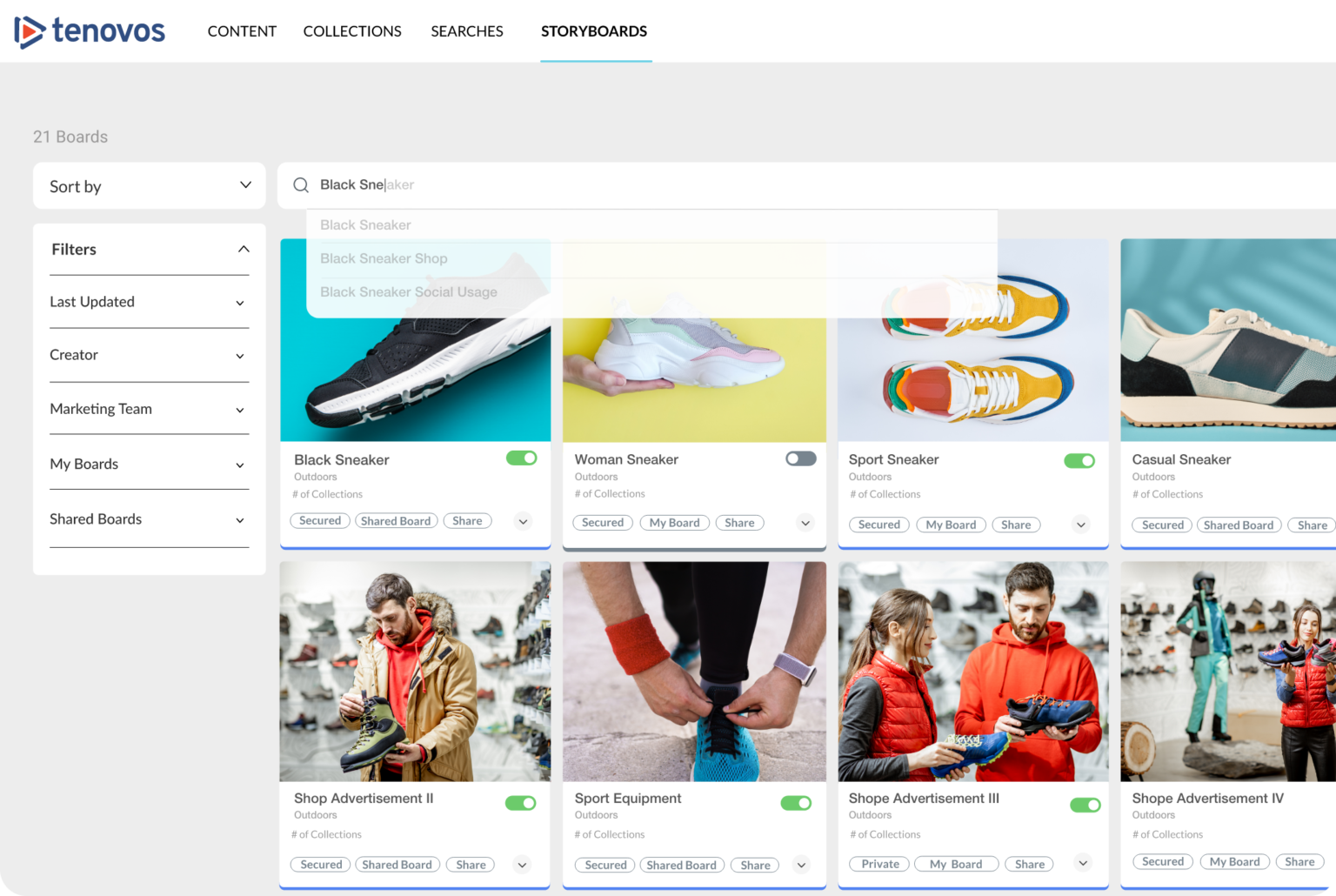
An organization’s ability to collaborate seamlessly with team members across — and outside of — the organization is also a key indicator of the success of a DAM implementation. Marketing doesn’t happen in a single silo; from research to ideation, to creation to deployment, marketing is interconnected and interdisciplinary. A modern DAM platform should connect the enterprise in such a way that it simplifies the creative life cycle and enables marketers to reduce the friction and time required to launch each new campaign.
Data-Driven Marketers Need Data-Driven Technology
The reality is that many of the DAM solutions available on the market currently have not kept pace with the evolving needs of the increasingly data-driven marketing operation; they’re often expensive, difficult to implement, and don’t deliver the user experience marketers and creative professionals have come to expect from their technology. Seen from this angle, it’s not surprising that many organizations are hesitant to invest heavily in a new system that is not capable of demonstrating a return on investment.
Brands need modern DAM platforms that not only enable them to meet the demands of marketing in the digital age, but also help them to demonstrate — and improve — their ROI. Marketers should expect their DAM platform to provide:
- A data-first approach to asset management that allows brands to measure and optimize their processes and their content to provide increasingly personalized experiences
- A seamless user experience that drives adoption and enables teams across the world to collaborate easily
- Performance and optimization capabilities underpinned by artificial intelligence and machine learning
- Continuous improvement and delivery to support the demands of a global omnichannel enterprise
At the end of the day, companies implement a DAM solution in order to optimize their processes and improve their ability to tell the compelling stories that are central to a successful marketing operation. This optimization should come not only in the form of improving the speed of creation, but also the strategy behind a given campaign. A system that has access to all of the contextual data that surrounds your every asset should be able to distill those data into insights that inform the creation of future content.
A modern, data-first DAM should act not only as a content database but also as a source of insight to enable marketers to make smarter creative decisions, which in turn allows them to tell stories that matter to their audience.
Want to know what types of data your DAM should be providing? Reach us at marketing@sifycorp.com
Written by Michael Waldron, CMO, Tenovos
RISE with SAP BTP
Introduction
SAP has unleashed its campaign of ‘RISE with SAP’ and it has been received very well by SAP customers and ERP prospects worldwide. RISE with SAP transitions ERP data (in the form of SAP ECC6.0 on-premise or SAP S/4 HANA on-premise) to the cloud (public or private) with less risk and without compromise. The bundle of ERP software, transformation services, business platform and analytics is quite an attractive offer to SAP customers having hosted SAP on-premise. This article delves into the business platform and analytics which is clubbed under ‘Business Technology Platform’ (hereafter called as BTP). SAP BTP is a cloud-based platform-as-a-service (PaaS) offering from SAP, which provides a set of tools and services for developing, integrating, and extending SAP applications and solutions. SAP BTP supports various cloud deployment models, including public, private, and hybrid clouds, and allows developers to build, deploy, and run their applications using SAP’s cloud infrastructure.
Four pillars of SAP BTP – It encompasses various capabilities that are categorized into following four pillars:-
1. Integration
This feature gives everything that is needed for agile business process innovation, extension, and integration in the cloud and in hybrid scenarios. You can easily integrate different systems, extend your current application, or create new solutions for your business needs with ideal user experience using the SAP Fiori interface. SAP Extension Suite provides various services that can be leveraged to build and extend SAP solutions. SAP Integration Suite (formally known as SAP Cloud Platform Integration -CPI Suite) lets you seamlessly integrate SAP and non-SAP solutions, both on-premise and in the cloud. SAP Integration Suite covers not only A2A and b2B integration scenarios but B2G(Business to Government) integration scenarios as well.
Currently, SAP provides over 2000+ pre-packed integration scenarios for different business processors. These out-of-the-box integration scenarios are ready-to-use, require minimum development effort, and cover a range of business process integrations. (Check out https://api.sap.com/ for details).
With the introduction of SAP Integration Suite, SAP PI/PO would be getting phased out in near future.
2. SAP Build
It enables everyone – no matter the skill level – to rapidly create and augment enterprise-grade apps, automate processes and tasks, and design business sites with drag-and-drop simplicity.
SAP Build brings together SAP Build Apps (formerly SAP AppGyver), SAP Build Process Automation (formerly SAP Process Automation), and SAP Build Work Zone (formerly SAP Work Zone) into a unified development experience with new innovations to rapidly build apps, automate processes and create business websites.
Low-code / No-code development – Low-code uses both a traditional programming language-based environment combined with no-code platforms and is used by developers with at least basic technical knowledge.
No-code is simpler, and it fully replaces the traditional programming language-based tooling with a suite of visual development tools (ex. drag-and-drop components) and can be used by technical and non-technical people alike.
3. Data and Analytics
SAP Data sphere component enables accessing authoritative data, helps harmonizing heterogeneous data and thereby simplifies the data landscape.
The SAP Master Data Governance enables operating on high quality, consistent master data and established a comprehensive master data governance
SAP Analytical cloud – It is a single solution for business intelligence and enterprise planning, augmented with the power of artificial intelligence, machine learning technology, and predictive analytics. It helps everyone in your organization make better decisions and act with confidence.
SAP Analytics Cloud removes silos, empowers business analysts, and unifies a company’s decision-making processes by combining business intelligence, augmented analytics, and enterprise planning into one product. It helps in achieving 360° insights with a single connected analytics platform.
4. Artificial Intelligence
It enables business applications and processes more intelligent with the power of AI on SAP Business Technology Platform. Its pre-trained AI models accelerate infusion of AI into Apps. It helps managing the AI model lifecycle into one central place and ensures AI deployment responsibly with transparency and compliance.
SAP solutions such as SAP Intelligent Robotic Process Automation (SAP Intelligent RPA) and machine learning let you automate the kind of complex, repetitive decisions that make up a significant portion of business processes.
Service Catalog – SAP has come up with a rich repository of readily available 96 services encompassing one or more of the four pillars mentioned earlier. They help in integrating and extending your solutions, optimizing your business processes, and thereby creating an engaging digital experience using SAP Business Technology Platform services. Just to give an idea, some of the services are listed below:
- Automation pilot – Simplify the operational effort behind any cloud solution in the SAP BTP.
- Cloud foundry runtime – It lets you develop polyglot cloud-native applications and run them on the SAP BTP Cloud Foundry environment
- Cloud Integration for data services – To integrate data between on-premise and cloud on a scheduled/batch-mode basis.
- Continuous Integration and Delivery (CI/CD) – It lets you configure and run predefined continuous integration and delivery pipelines that automatically build, test, and deploy your code changes to speed up your development and delivery cycles.
- Identity provisioning – Lets you manage Identity Lifecycle processes for cloud and on-premise systems
- Kyma runtime – Develop and run containerized applications and extensions on Kubernetes. Kyma runtime is a fully managed Kubernetes runtime based on the open-source project “Kyma”. This cloud-native solution allows the developers to extend SAP solutions with serverless functions and combine them with containerized microservices. The offered functionality ensures smooth consumption of SAP and non-SAP applications, running workloads in a highly scalable environment, and building event- and API-based extensions.
- SAP AI core – It enables building a platform for your artificial intelligence solutions. It is designed to handle the execution and operations of your AI assets in a standardized, scalable, and hyper-scaler-agnostic way. It provides seamless integration with your SAP solutions. Any AI function can be easily realized using open-source frameworks. SAP AI Core supports full lifecycle management of AI scenarios.
SAP BTP Deployment – Salient points:
- Regions – You can deploy applications in different regions. Each region represents a geographical location (for example, Europe, US East) where applications, data, or services are hosted. A region is chosen at the subaccount level. For each subaccount, you select exactly one region. The selection of a region is dependent on many factors: for example, application performance (response time, latency) can be optimized by selecting a region close to the user. The global account itself is also running in a region.
- Environments – Environments constitute the actual Platform as a Service offering of SAP BTP that allows for the development and administration of business applications. Environments are anchored in SAP BTP on the subaccount level.
Each environment comes equipped with specific tools, technologies, and runtimes that you need to build applications. So a multi-environment subaccount is your single address to host a variety of applications and offer diverse development options. One advantage of using different environments in one subaccount is that you only need to manage users, authorizations, and entitlements once per subaccount, and thus, grant more flexibility to your developers.
- SAP BTP can have one or more global accounts. Global accounts are associated with license or contract which your company has with SAP BTP. Global account takes care of the license and contract and whatever the activities you perform or how you are billed is managed by global account.
- Global accounts are linked with entitlements which are passed down to subaccounts. Entitlements are the kind of resources provided to you based on the license that you purchased.
- Sub account is the place where you will be creating your PaaS environment(cloud foundry/Kyma).
- SAP BTP Cockpit – The SAP BTP cockpit is the central user interface for administering and managing your SAP BTP accounts as a platform user. To access the SAP BTP cockpit, you need to open a specific URL ‘https://cockpit.<region>.hana.ondemand.com’. You can replace the <region> with the one you are operating in (for example: eu10, us10, ap10) to have a lower response time and latency to the cockpit. After logging in with your user credentials, you might get prompted with a pop-up to choose the global account you want to access. Of course, you are able to switch between the global accounts as and when needed.
- Working with the SAP BTP cockpit is the easiest way to manage and administer your SAP BTP accounts.
Conclusion: SAP has come up with a lot of helpful resources related to BTP including use cases, case-studies, readily available services, pre-packed integration scenarios, tutorials etc. BTP offers a rich load of tools/services which would enable your organization’s business transformation and expedite your digitization journey. It needs to be fully leveraged when you opt for ‘RISE with SAP’.



